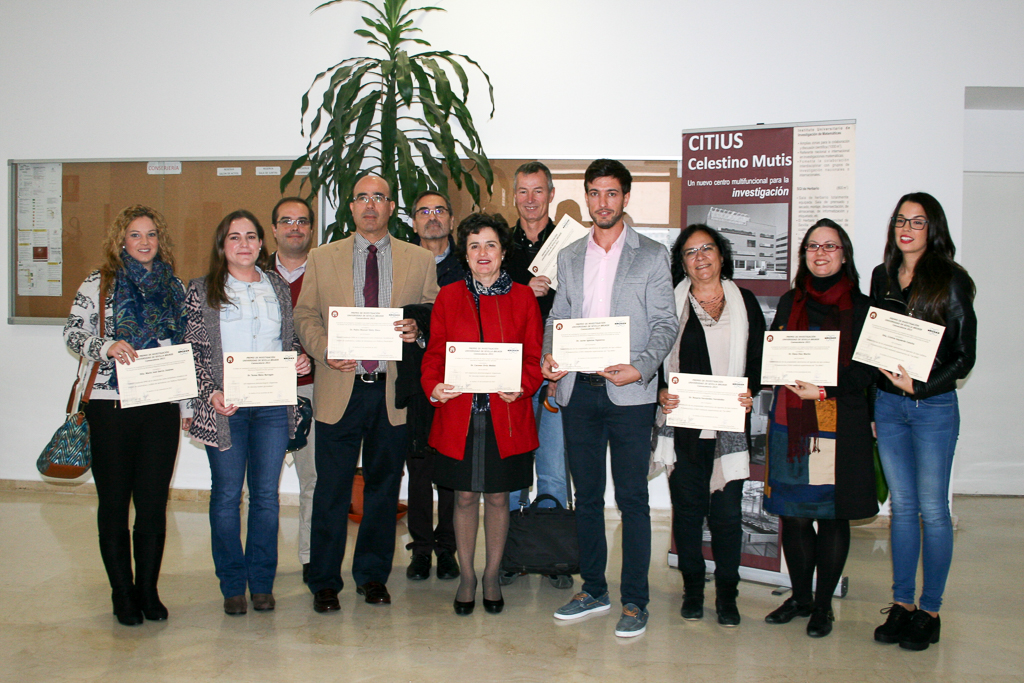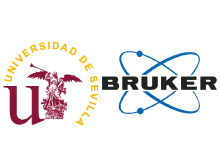The fifth edition of the University of Seville-BRUKER Research Awards ceremony took place last Friday, November 25. These awards recognize the research projects and works with the greatest technological impact and the use of the General Nuclear Magnetic Resonance Research Service of the University of Seville.
In this fifth edition, the award, worth 1500 euros, for the research work with the greatest technological impact in the field of applied nuclear magnetic resonance was for the article PH-responsive Pharmacological Chaperones for Rescuing Mutant Glycosidases, by Teresa Mena Barragán Aya Narita, Dino Matias, Gustavo Tiscornia, Eiji Nanba, Kousaku Ohno, Yoshiyuki Suzuki, Katsumi Higaki, José Manuel García Fernández and Carmen Ortiz Mellet. Among its authors, the researchers Teresa Mena Barragán and José Manuel García Fernández stand out, both attached to the Institute of Chemical Research (IIQ) belonging to the Isla de la Cartuja Scientific Research Centre (cicCartuja).
This award-winning article describes a novel strategy for the preparation of pharmacological chaperones capable of self-deactivating depending on the pH. These molecules have the ability to bind to defective proteins, responsible for some diseases called “lysosomal storage” and, in this way, restore their normal behaviour.
On the other hand, the awards in the project category, endowed with 1,000 euros each, have been for the works entitled Study by NMR of the interaction between chondroitin sulphate and dermatan sulphate mimetic inhibitors with Midkina Pleiotrophin, and Determination of the electronic properties of N-heterocyclic carbene-type ligands (CNH) by means of 77Se-NMR experiments.
The first project, presented by researchers Pedro Nieto Mesa, José Luis de Paz Carrera, Sergi Gil Caballero and María José García Jiménez, all of them attached to the Institute of Chemical Research, delves into the molecular bases of the action of Midkina and Pleiotrophin, two neuronal growth factors involved in physiological and pathological processes.
The second project, led by researchers Javier Iglesias Sigüenza, Elena Díez Martín, Cristina Izquierdo Cancho, Rosario Fernández Fernández and José María Lassaletta Simón, also a member of the Institute of Chemical Research, aims to apply a method based on NMR to estimate the donor or acceptor character of a family of ligands, which can form part of new, more active and selective catalysts.




